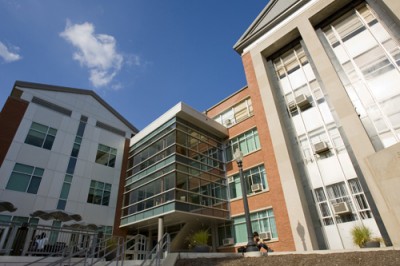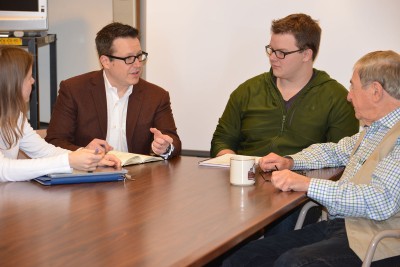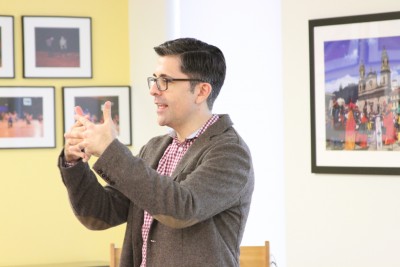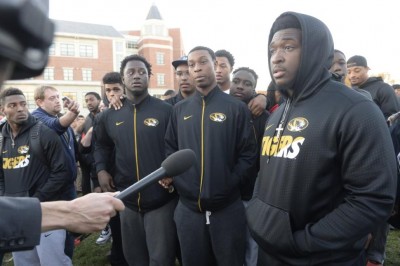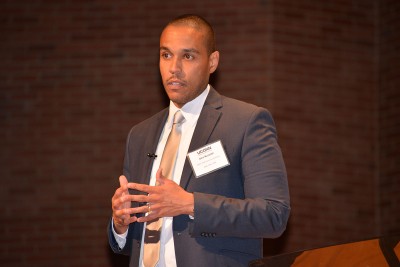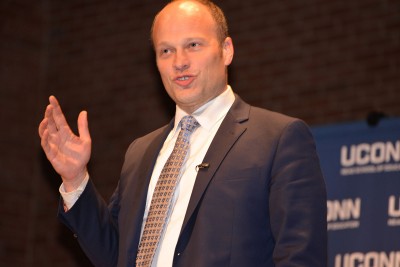For Kaitlin Leonard, a mother of two young children and a literacy coach who had previously worked for 10 years as a schoolteacher, finding the time or the money to pursue a Ph.D. had never seemed a realistic possibility.
This fall, however, Leonard entered the Neag School as a special education doctoral candidate – with a full four years of funding made available to her through a new national consortium. Established last year, the consortium – known as the National Center for Leadership in Intensive Intervention (NCLII), and which counts UConn among its seven partner institutions – is offering federal funding to a total of 28 scholars interested in earning a Ph.D. in the field of special education.
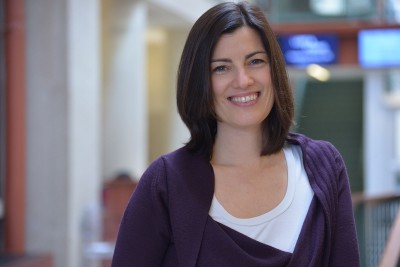
“I don’t think I would have explored this opportunity, had this funding not been available,” says Leonard, who lives in Woodstock, Conn. “It’s really what sold my family on it.”
Leonard is one of two NCLII student scholars currently at UConn, joined by fellow scholar Sarah Wilkinson; a third slot at the Storrs campus is currently open to applications from prospective candidates. In addition to UConn, NCLII’s other partner institutions include Vanderbilt University, Southern Methodist University, University of Illinois at Chicago, University of Minnesota, University of Texas at Austin, and Virginia Commonwealth University. The consortium, supported by the U.S. Department of Education’s Office of Special Education Programs, is intended to improve the quality and quantity of doctoral students in the field.
“There’s an incredible need for us to provide intervention for kids [with disabilities] … This is your foot in the door to a life of building futures for kids by providing a better education.”
– Assistant Professor Devin Kearns
“The purpose of this center is to bring together experts in academics and behavior,” says Assistant Professor Devin Kearns, an expert in special education and students with disabilities, and one of the Neag School’s five professors serving as participating faculty in the NCLII. “We had the right combination of people to be good partners for this.” Kearns is joined by Neag School faculty Michael Coyne – UConn’s lead faculty representative at NCLII – as well as Jennifer Freeman, Natalie Olinghouse, and Brandi Simonsen, all of whom play a key role on one or more of NCLII’s committees.
‘An amazing opportunity’
In addition to full funding, the NCLII fellowship provides Leonard and other student scholars with a wealth of unique learning, networking, and research opportunities. For one, students spend several hours per week participating in an online curriculum – devised in part by Kearns, who serves on NCLII’s curriculum design committee.
Each curriculum module is led by a different NCLII instructor, through which students learn about major topics in the field of special education, from intensive intervention to curriculum-based measurement. The online interface gives the student scholars access to video presentations by NCLII faculty experts, primary source readings, and various web resources; they also interact via Skype with faculty and fellow students from each of the partner institutions.
NCLII students and faculty also convene periodically in person, giving scholars like Leonard firsthand access to some of the nation’s most influential faculty in the field of special education. Last month, for instance, she and other NCLII students attended a summit held at Vanderbilt University in Nashville.
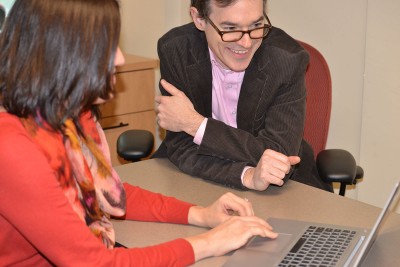
“They are getting to talk with other future leading scholars in the field – students who are going to be their peers going forward,” Kearns says. “It’s an amazing opportunity to get to know these students and faculty across the different sites in an immediate kind of way, one that often develops over years and years because you don’t typically have those opportunities.”
The chance to take part in groundbreaking research with top experts is yet another piece of the NCLII fellowship – and one that Leonard says was a particularly big draw for her. Leonard, who spent the first decade of her career as a schoolteacher – initially in special education, and then in a general education classroom – most recently worked as a literacy coach for HILL for Literacy, a Massachusetts-based nonprofit that specializes in developing and deploying sustainable literacy programs in partner school districts. There, she became involved in research connected in part with the Neag School’s Center for Behavioral Education and Research (CBER).
“I realized I loved working with struggling learners and trying different research methods to help them,” she says. Now, with Coyne as her advisor, Leonard is already engaged in no less than three research projects – one focused on dyslexia in third-graders; one on literacy in schoolchildren in grades kindergarten through third grade; and another, technology-based vocabulary and comprehension intervention, also with third-graders.

Regardless of what kind of path Leonard takes from here, Kearns says, “The training is focused on how to make you a great special education researcher – whatever form that takes.”
Why a Ph.D.?
Having her own children, and “seeing the paths they’re taking and the questions I need to ask,” is what Leonard says solidified her interest in special education. “Learning how to be an advocate as a parent helped me to want to advocate for all children,” she says.
That, she says, combined with her exposure to research work, drove her to “realize what my passion is, and to really want to follow it” – ultimately leading her to give serious consideration to pursuing a Ph.D. “I’m thrilled,” she says of the Neag School program. “This is harder than anything else I’ve done in my life, but I’m so proud that I’m doing this.”
Applicants for NCLII funding are invited to apply through the Neag School by the Feb. 15 deadline. The center, Kearns says, is seeking candidates with “a demonstrated interest in improving academic and behavioral outcomes for students with the most severe and persistent learning needs.”
Fortunately for aspiring special education leaders and researchers, NCLII funding is not the only source of full funding for scholars at the Neag School, as Kearns, Coyne, and other special education professors have a number of other federal grants in place over the next several years.
“Education is really struggling to support kids with disabilities,” Kearns says. “There’s an incredible need for us to provide intervention for these kids – and we know a lot about how to help them. This is an amazing opportunity to learn how to be one of the people who does that work. This is your foot in the door to a life of building futures for kids by providing a better education.”
Interested in applying? Applications for the final NCLII student scholar opening at UConn are due Feb. 15, 2016. Click here or visit NCLII.org to find more information.
